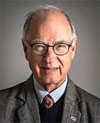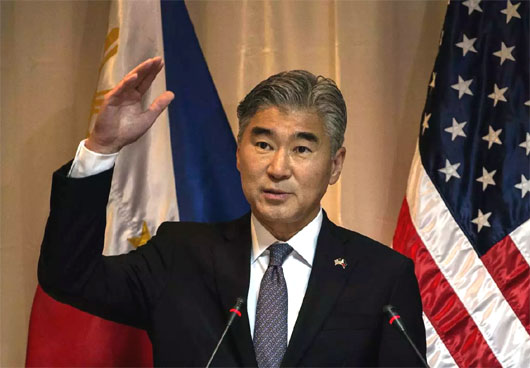Special to WorldTribune.com
 By Donald Kirk
By Donald Kirk
SEOUL – If there’s anything the presidents of the U.S. and South Korea and the leader of North Korea are sure about, it’s the need for two of them, President Donald Trump and Chairman Kim Jong-Un, to meet in the very near future.
Trump reaffirmed the need for the summit again on Sunday in a tweet in which he announced that key U.S. negotiators were meeting North Korean officials to arrange for the summit he had shocked the world by cancelling the previous week.

As evidence of the urgency of the talks, the U.S. negotiating team is led by Sung Kim, who had been ambassador to South Korea during the presidency of Barack Obama and also was lead U.S. negotiator in talks with the North Koreans during the Obama administration. Sung Kim is now U.S. ambassador to the Philippines, but obviously he’s needed now to talk to the North Koreans. The U.S. does not yet have an ambassador to South Korea although Admiral Harry Harris, commander of U.S. forces in the Pacific, has been named to the post and is awaiting U.S. Senate confirmation.
Trump was incredibly upbeat in his praise for what he called North Korea’s “brilliant potential” – possibly a way to remind Kim Jong-Un of the rewards he would receive if he agreed to give up his nuclear program on America’s terms. North Korea has said it ‘s not looking for financial benefits and cannot be bought off or bribed, but Trump offered a lure that may be difficult to reject, namely the promise that the North would be “a great economic and financial nation one day.”
Trump in Washington, Moon Jae-In in Seoul and Kim in Pyongyang all agree Trump and Kim have simply got to meet notwithstanding the letter Trump wrote “Chairman Kim” last week saying the “tremendous anger and open hostility”shown in a statement by Vice Foreign Minister Choe Son-Hui was “not consistent with the desire of humankind for peace and stability in the world” – and good reason to cancel the summit.
Ironically, Sung Kim was talking face to face with Choe Son-Hui in Panmunjom. He knows her well from previous negotiations a number of years ago and should know how to deal with her even though the U.S. and North Korea have never been able to come to terms on the nuclear issue. They presumably are dealing with technical arrangements of renewing plans for a Trump-Kim summit as well as approaches to the central topic of denuclearization.
Kim Jong Un showed his urgent desire to meet Trump when he summoned Moon to a meeting Saturday afternoon in Panmunjom and told him he had a “fixed will” to meet Trump. Moon clearly loved it, saying the two agreed the summit “must be successfully held” and promising “to work toward a peaceful development of the Korean peninsula.”
In a televised press conference the morning after what had been a “secret” unannounced two-hour meeting on the northern side of the Joint Security Area in the truce village of Panmunmjom, he said himself “would be more than happy to serve as a bridge” between the two.
Had Trump managed to force Kim to return to reality, to have his one-time adversary begging in desperation to meet him? Would Kim and the elite around and below him knock off the nastiness and stop insulting his highest ranking lieutenants. Granted, Vice President Mike Pence and the national security adviser, John Bolton, did upset the North Koreans by suggesting Kim might suffer the same awful fate as the Libyan leader, Muammar Gadhafi, slain by a mob in a U.S.-supported revolt eight years after Gadhafi had given up his fledgling nuclear program, but could everyone get around the unfortunate Libyan analogy and move on?
Or was Kim, in a huge exercise in face-saving for, himself, Trump and Moon, setting the trap for a summit that won’t go anywhere beyond the preceding summits and statements and talks going all the way back to the North-South agreement of 26 years ago at which North and South promised the Korean peninsula would indeed be “nuclear free”?
The prospect of a summit concluding in meaningless happy talk seemed altogether possible when Moon reverted to pledges by him and Kim to achieve “complete denuclearization” of the Korean peninsula, the same terminology that appeared toward the end of the “joint declaration” that they had signed in their first meeting at Panmunjom. The difference between that meeting, on April 27, and this one, on May 26, was that the two had met on the southern side of the Joint Security Area, in a building known as “Peace House,” amid pomp and circumstance broadcast live on Korean television networks.
This time, the two met under what appeared as emergency circumstances, at the behest of Kim, who Moon said had requested no publicity until the next day. All anyone saw of their second summit was footage on South Korean TV of Moon’s motorcade crossing the line to the northern side, walking up a red carpet into the North Korean building, Tongil Gak, Unification House – and embracing afterward in a display of warmth and thanks that clearly betrayed the overwhelming relief of both that maybe Trump was really ready to go to Singapore.
Moon assured everyone on TV that the DPRK, Democratic People’s Republic of Korea “has clearly shown their position to carry out denuclearization” but “as to the methods, will have to talk about that issue.”
Talk and more talk. Isn’t that what negotiators have been doing for years, in talks between North and South in 1991 and 1992, between the U.S. and North Korea in 1994, in four-sided talks including the two Koreas, the U.S. and China, and in six-party talks including those four plus Russia and Japan? Might Trump and Kim, eye to eye across the table in Singapore, get beyond vague understandings and aspirations, only to have North Korea yet again rev up a nuclear program under which it’s conducted six underground tests, the last and biggest in September at the test site at Punggye-ri in mountainous northeastern region of North Korea.
Sure, the North Koreans last week made a great show of destroying the site for the benefit of TV correspondents from the U.S., China, Russia, Britain and South Korea. How much, however, did that mean considering the site had been rendered largely useless in thje last and biggest test in September – and, more disturbingly, the North Koreans haven’t said a word about shutting down their main nuclear facility at Yongbyon north of Pyongyang or giving up the 40-60 warheads they’ve already fabricated there?
Still, Moon was totally optimistic, certain that this time had to be different. It was necessary, he said, “to keep up the momentum” of his summit a month earlier with Kim. “Between the U.S. and DPRK, they will make significant progress,” he said. “Both sides are still sincere.”
Trump for his part was definitely playing along. At about the same time Moon was holding forth in Seoul, he was if anything more upbeat than ever about a meeting with Kim in Singapore. “The summit talks are moving very nicely.“There’s a lot of good will.”
He did, however, offer one “if” – the same one he’d made so often before: “If,” he said, “if we can be successful in denuclearization.”
